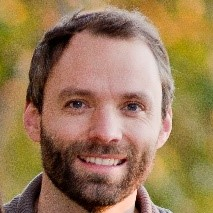Hillslope Hydrology: Towards Improved Process Understanding Using Modeling and/or Field Observations
A special issue of Water (ISSN 2073-4441). This special issue belongs to the section "Hydrology".
Deadline for manuscript submissions: closed (31 August 2020) | Viewed by 24158
Special Issue Editors
Interests: hillslope hydrology; transport in porous media; preferential flow; pesticides; soils; runoff processes
Interests: catchment hydrology; process understanding; hydrologic connectivity; transit time; residence time; hydrology & biogeochemistry interplay; watershed management
Interests: isotope hydrology; ecohydrology; water ages; catchment hydrology; hillslope hydrology
Interests: agricultural non-point pollution; water and nitrogen cycle; water and salt transport; numerical simulation of soil water and groundwater; sustainable management of groundwater resources
Special Issue Information
Dear Colleagues,
The hillslope is a fundamental spatial unit of headwater catchments. It is recognized that hillslopes are of key importance for a reliable description of both catchment runoff generation and biogeochemical processes. However, understanding hillslope processes has been limited by problems posed by the presence of heterogeneity. Quantifying the threshold hydrological responses of hillslopes to rainfall as controlled by soil heterogeneity, preferential flow, and the spatiotemporal connectivity of soils’ saturated patches requires distinct and multi-scale monitoring procedures which are rare in most environments. The inability to measure or map heterogeneity has restricted the development of robust physically based models, critically required for getting the right answer for the right reason in hydrologic predictions as well as for understanding the interplay between hydrology, biogeochemistry, and ecohydrological feedbacks. To advance the current models, heterogeneity should be replaced by the ecosystem function that it performs, instead of characterizing and specifying its exact details. This would allow to move from a micro-scale Newtonian response to a hillslope-scale, functionally based response. The recent literature indicates that the residence times of water and the landscape transit time distribution are the crucial macro-scale descriptors of how catchment functions, providing a fundamental basis for studying hydrological and biogeochemical transformations in the subsurface. Flux partitioning of water and dissolved substances occurring along various flow pathways (e.g., above and on the soil surface, above the soil–bedrock interface, evaporation, and transpiration) with different residence times plays a major role in the overall hillslope water and material balance. The connectivity of hillslope soil water with the riparian zone and the underlying geological structures remain also poorly understood. To address the above-mentioned challenges, novel monitoring and observation techniques, as well as new modeling approaches, are needed to foster a better quantification of hillslope hydrologically functioning descriptors, including water transit time, residence time, and flow pathways.
Dr. Jaromir Dusek
Dr. Ali Ameli
Dr. Matthias Sprenger
Prof. Shiqin Wang
Guest Editors
Manuscript Submission Information
Manuscripts should be submitted online at www.mdpi.com by registering and logging in to this website. Once you are registered, click here to go to the submission form. Manuscripts can be submitted until the deadline. All submissions that pass pre-check are peer-reviewed. Accepted papers will be published continuously in the journal (as soon as accepted) and will be listed together on the special issue website. Research articles, review articles as well as short communications are invited. For planned papers, a title and short abstract (about 100 words) can be sent to the Editorial Office for announcement on this website.
Submitted manuscripts should not have been published previously, nor be under consideration for publication elsewhere (except conference proceedings papers). All manuscripts are thoroughly refereed through a single-blind peer-review process. A guide for authors and other relevant information for submission of manuscripts is available on the Instructions for Authors page. Water is an international peer-reviewed open access semimonthly journal published by MDPI.
Please visit the Instructions for Authors page before submitting a manuscript. The Article Processing Charge (APC) for publication in this open access journal is 2600 CHF (Swiss Francs). Submitted papers should be well formatted and use good English. Authors may use MDPI's English editing service prior to publication or during author revisions.
Keywords
- hillslope hydrology
- stormflow
- rainfall–runoff relationship
- modeling
- flux partitioning
- threshold behavior
- travel time of water
- bedrock
- preferential flow
- soil heterogeneity
- water residence time
Benefits of Publishing in a Special Issue
- Ease of navigation: Grouping papers by topic helps scholars navigate broad scope journals more efficiently.
- Greater discoverability: Special Issues support the reach and impact of scientific research. Articles in Special Issues are more discoverable and cited more frequently.
- Expansion of research network: Special Issues facilitate connections among authors, fostering scientific collaborations.
- External promotion: Articles in Special Issues are often promoted through the journal's social media, increasing their visibility.
- Reprint: MDPI Books provides the opportunity to republish successful Special Issues in book format, both online and in print.
Further information on MDPI's Special Issue policies can be found here.








